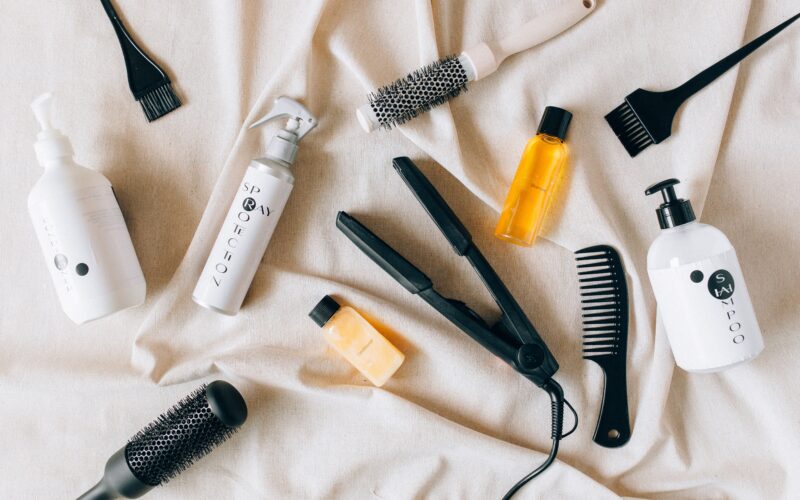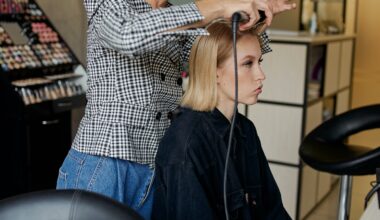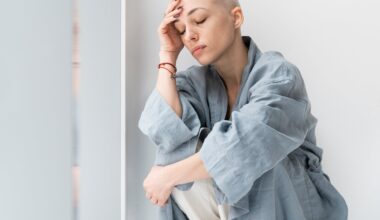Introduction
In the ever-evolving world of hair and beauty, the pursuit of lusciously sleek locks has never waned. As someone with over two decades of experience in the hair industry, I’ve been privy to countless hair transformations and have seen firsthand the magic of treatments like Hair Straightening and Hair Relaxing. But while both treatments promise the allure of pin-straight hair, they are inherently different. This article aims to delve deep into these treatments, offering insights, and guiding you to the one that suits you best.
Understanding Hair Straightening
Hair straightening is often the go-to for those battling frizzy, curly, or wavy locks. It’s like a magic wand, waving away the kinks and waves, leaving behind a trail of shiny, straight hair. But what exactly goes into this process?
- Definition and Process: At its core, hair straightening is about restructuring the hair. By breaking and then rearranging the hair’s natural bonds, you can achieve a straighter appearance.
- Types of Hair Straightening:
- Brazilian Hair Straightening: A popular choice, this method employs a mix of chemicals and keratin, a natural protein in our hair. The result? Silky smooth hair that lasts for months.
- Japanese Hair Straightening: A bit more intensive, this technique uses thermal reconditioning to permanently straighten the hair. As the name suggests, it originates from Japan and has become a favorite among those seeking a long-term solution.
- Advantages:
- Long-lasting Results: One of the standout benefits of hair straightening is its durability. Especially with methods like the Japanese straightening, you can expect the results to last a long time.
- Shiny Finish: Beyond just straightening, these treatments often leave the hair with a glossy sheen, enhancing its overall appearance.
- Disadvantages:
- Potential for Damage: Any treatment that alters the hair’s structure comes with risks. Over time and with frequent treatments, the hair might weaken, leading to breakage.
- Cost: Quality hair straightening treatments, especially those that promise long-term results, can be quite pricey.
- Ideal Candidates: If you have particularly curly or frizzy hair and are seeking a more permanent solution, hair straightening could be your golden ticket. However, always ensure you consult with a professional to evaluate if your hair can withstand the treatment.
Delving into Hair Relaxing
Hair relaxing, though often lumped together with straightening, has its own unique attributes. For many, it’s a gentler introduction to the world of hair transformation, offering a softer, straighter look without going to the extremes.
- Definition and Process: Hair relaxing is all about easing the natural curls in hair, turning tight coils into wavy or straight strands. It’s a chemical process, where a relaxer is applied to the base of the hair shaft, altering its structure.
- Types of Hair Relaxing:
- Lye-based relaxers: These are the heavy hitters of the relaxing world. Made from sodium hydroxide, they act quickly and are incredibly effective, but they can be a tad harsh. The results? Super straight hair.
- No-lye based relaxers: These are the kinder, gentler cousin to the lye-based relaxers. Often made from calcium hydroxide or guanidine hydroxide, they are milder, making them suitable for those with sensitive scalps. The trade-off is that the results might not be as lasting or pronounced as their lye-based counterparts.
- Benefits:
- Natural Look: Hair relaxing offers a softer, more natural look compared to other straightening methods. It reduces frizz and tames curls without making the hair pin-straight.
- Manageability: For those struggling with unruly curls every morning, relaxing offers a break, making hair more manageable.
- Downside:
- Potential Damage: Just like with straightening, there’s always a risk. Incorrect application, especially with lye-based relaxers, can lead to hair damage and scalp irritation.
- Maintenance: Hair relaxing might require more frequent touch-ups, particularly as new, untreated hair grows in.
- Ideal Candidates: If you have tightly coiled hair and are looking to soften the texture without going super straight, hair relaxing is worth considering. However, as with any treatment, a consultation with a seasoned professional is crucial to determine its suitability for your hair type and condition.
Comparing Costs and Maintenance
Both hair straightening and relaxing come with their own set of expenses and maintenance requirements. It’s essential to understand these to make an informed decision about which is best for you.
- Initial Cost:
- Hair Straightening: Typically, hair straightening treatments, especially Japanese and Brazilian, can be on the pricier side. The cost reflects the long-lasting nature of the results and the meticulousness of the process.
- Hair Relaxing: Generally speaking, hair relaxing treatments can be more pocket-friendly than straightening treatments. However, the variation in price can be attributed to the type of relaxer used and the salon’s reputation.
- Maintenance Costs:
- Hair Straightening: After the initial treatment, maintenance primarily revolves around touch-ups for the new growth. Depending on the method chosen and hair growth rate, you might find yourself revisiting the salon every few months.
- Hair Relaxing: Relaxed hair might require more frequent visits for touch-ups. Additionally, investing in quality hair care products to keep the hair healthy and prolong the effects of the treatment is a must.
- Time Investment:
- Hair Straightening: While the treatment itself might take a few hours, the time you save on daily styling can be substantial. With straight hair, daily maintenance becomes a breeze.
- Hair Relaxing: Although the process is quicker than straightening, relaxed hair still needs regular moisturizing and care to prevent breakage and maintain its softness.
Analyzing Long-term Effects
It’s paramount to understand the long-term implications of these treatments on hair health and structure.
- Hair Straightening:
- Structure Alteration: Over time and with repeated treatments, the hair’s bonds are continuously broken and rearranged, which can weaken the strands.
- Health Impact: The chemical components in some treatments might reduce the natural shine and strength of the hair, leading to potential damage in the long run if not cared for properly.
- Hair Relaxing:
- Chemical Impact: Given that relaxing is a chemical process, there’s always a risk of damage. Overuse can lead to hair thinning and breakage.
- Hair Growth: In some cases, excessive use of hair relaxers can impact the hair’s growth cycle, leading to reduced growth or hair loss.
- Preventive Measures: For both treatments, it’s vital to engage in regular deep conditioning sessions, invest in quality hair products tailored for treated hair, and take breaks between treatments to allow the hair to recover.
Recommendations
In my two decades as a hair stylist, I’ve come to understand that every head of hair is as unique as the individual it belongs to. Making the right choice between hair straightening and hair relaxing requires a deep understanding of one’s hair needs, lifestyle, and preferences. Based on the insights shared above, here are some personalized recommendations to consider:
- Consultation First:
- Why it’s important: Regardless of how much research you do, there’s no substitute for a professional opinion. A seasoned stylist can assess the health, texture, and strength of your hair and guide you towards the best choice.
- What to ask: During the consultation, inquire about the products used, potential side effects, and post-treatment care.
- Commitment Level:
- For the Long Haul: If you’re looking for a more permanent solution and are ready for the commitment, consider Japanese hair straightening.
- For a Softer Change: If you desire a softer, more natural look and a less permanent change, hair relaxing may be the way to go.
- Care Post-Treatment:
- Invest in Quality Products: After undergoing either treatment, your hair will need TLC. Opt for sulfate-free shampoos, deep conditioners, and leave-in treatments tailored for chemically treated hair.
- Regular Salon Visits: Schedule regular trims and conditioning treatments to maintain hair health.
- Cost Consideration:
- Budgeting: Always factor in not just the initial cost of the treatment but also the subsequent maintenance costs. While hair relaxing might seem more affordable initially, frequent touch-ups might escalate the expenses.
- Quality over Cost: While it’s tempting to hunt for bargains, prioritize the reputation and reviews of the salon and stylist. In the world of hair treatments, sometimes you do get what you pay for.
- Think Long-term:
- Breaks Between Treatments: To prevent potential damage, it’s essential to give your hair breaks between chemical treatments. This allows it to recover and maintain its health.
- Natural Alternatives: If you’re wary of the long-term effects of chemicals, consider exploring natural or less intensive treatments, like keratin treatments or hair smoothening.
Remember, while trends come and go, the health of your hair is paramount. Whether you opt for straightening or relaxing, the goal is to ensure your locks not only look fantastic but also remain strong and healthy.
Conclusion
Hair is often dubbed as our “crowning glory,” and with good reason. It plays a crucial role in how we present ourselves and is deeply intertwined with our self-confidence. Choosing between hair straightening and hair relaxing is more than just a beauty decision; it’s a commitment to a particular lifestyle and maintenance regime.
Both treatments offer a transformative experience. Hair straightening provides a sleek, pin-straight appearance that’s enduring and reduces daily styling hassle. On the other hand, hair relaxing offers a gentler transition, taming those curls and frizz, resulting in wavy to straight hair without being overly flat.
But as with every chemical treatment, there’s a trade-off. The allure of transformed locks comes with the responsibility of intensive aftercare, regular salon visits, and an understanding of the long-term effects.
However, amidst the technicalities and choices, here’s a golden nugget of wisdom from two decades of experience in the hairstyling realm: Whatever you choose, embrace it wholeheartedly. Trends will ebb and flow, but confidence is timeless. And that confidence stems from informed choices and embracing the beauty in change.
Remember, your hair journey is deeply personal. Whether you’re team straightening or relaxing, the key is to prioritize hair health, make informed decisions, and most importantly, wear your hair with pride and joy.




